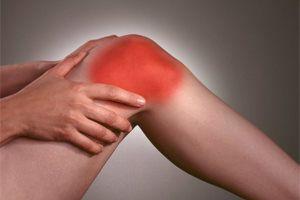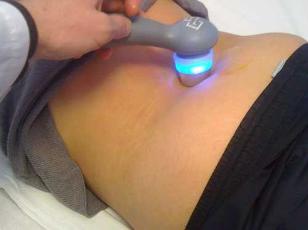Osteoarthritis is a chronic disease in which the connective tissue structure of the musculoskeletal system is damaged. The disease is characterized by a progressive course, in which context the cartilage tissue is gradually destroyed. This pathology is diagnosed in many people over 65 years old, because one of the factors that contribute to the formation of this pathology is the natural aging process of the body.
Description of the disease
A post-traumatic, endocrine and inflammatory disease, excessive physical overload or vice versa, inactivity can cause the development of degenerative dystrophic disease. The main signs of arthrosis: pain in the joint area with edema and limited activity in it.
To diagnose the disease, they resort to the help of instrumental techniques - X-ray, arthroscopy, computed tomography and magnetic resonance. In the treatment of stages 1 and 2 arthrosis, conservative methods are used - taking medications, physiotherapy, massages and physiotherapy exercises. If irreversible destructive changes have occurred in the joint tissue, an operation is necessary - arthrodesis or endoprosthesis.
Pathogenesis
Osteoarthritis is characterized by pronounced changes in the structure of connective tissue. The formation of deforming erosions occurs in the cartilage, due to which collagen and proteoglycan fibers, which contain proteins (5-10%) and glycosaminoglycans (90-95%), are destroyed.
As a result, the stability of the collagen network decreases, the metalloproteinase is released and all forms of protein in the extracellular matrix are destroyed. The acceleration of destruction occurs due to the increased biosynthesis of collagenases and stromelysin.
As a rule, when enzymes are present in the body in normal amounts, they keep the level of cytokines - small molecules of peptide information - under control. If arthrosis progresses, the concentration of this protein decreases, so the enzymes that affect cartilage are released in large volumes.
As a result, proteoglycans with a distorted structure absorb water, which they cannot retain. Therefore, the excess fluid penetrates the collagen fiber, which begins to "swell", which leads to loss of strength and elasticity.
The qualitative and quantitative composition of the joint fluid also changes for the worse. In the context of arthrosis, there is a decrease in the concentration of hyaluronic acid. The transport of nutrients and oxygen to the hyaline cartilage tissue is interrupted at the volume necessary for its restoration. In cartilage, softened foci are formed, followed by the formation of fissures, specific necrotic growths. Then, the bare heads begin to be exposed, the microtrauma appears against the bottom of displacement in relation to the other.
What causes the development of the disease
The reason for the development of primary (idiopathic) arthrosis has not yet been established. This disease develops without the influence of any factors, so doctors are of the opinion that the cause of this problem lies in the propensity, at the genetic level, for premature destructive processes in the cartilage. The formation of secondary arthrosis occurs as a complication of other joint diseases or in the context of an injury.
The presence of the following can cause the formation of degenerative dystrophic pathology:

- lesion of the articular tissue or located close to the connective tissue structure in the form of fracture, dislocation, meniscus trauma, partial rupture or complete separation of the bone from the muscle and ligament tissue, tendons;
- congenital dysplastic disorder in the development of joints;
- disorders in the functionality of glands in the endocrine system, metabolic disorders;
- rheumatism or rheumatic fever;
- polyarthritis, rheumatoid, reactive, metabolic, gouty or psoriatic arthritis;
- purulent arthritis, the cause of which is the effects of streptococci, epidermals or Staphylococcus aureus;
- tuberculosis from any location, brucellosis, chlamydia, gonorrhea, syphilis;
- degenerative dystrophic pathologies, for example, osteochondritis dissecans.
The increased mobility of articular tissue, which is observed in the context of the production of special collagen fibers in the body, can contribute to the formation of arthrosis.A similar phenomenon is observed in 10% of people who live on the planet, it is not considered a disease.Although, in the context of hypermobility, there is weakness in the tendon-ligament system, whereby a person is susceptible to injuries, especially in the ankle joint, in the form of sprains and ruptures of the ligament tissue, dislocations.
In some cases, problems with hematopoietic function (for example, the presence of hemophilia) can lead to the formation of arthrosis. In the context of hemarthrosis (hemorrhage in the joint cavity), the blood supply to the cartilage tissue deteriorates, because of which it begins to collapse.
Among the predisposing factors, it is worth mentioning the presence of old age, frequent loads in the articular tissue exceeding the limits of its strength, excess body weight, operated, hypothermia.
The risk group includes menopausal women, citizens living in adverse environmental conditions or in contact with toxic chemicals. If the diet contains insufficient amounts of vitamins and minerals, conditions for the gradual destruction of hyaluronic cartilage tissue arise.
Symptoms

Arthrosis is dangerous because the first stage of formation is asymptomatic. The manifestation of the clinical picture of the disease occurs over time, the primary symptoms appear with significant destruction of the cartilage.At first, the patient experiences a mild pain syndrome without a clear location.It occurs after physical effort - lifting heavy objects, sports training.
In some cases, the first sign that a person notices the appearance of crushing and clicking during flexion or extension of the joints. The patient realizes that it is sometimes difficult to move. Although they are in the initial stage of arthrosis formation, mobility problems appear only in the morning and pass quickly.
With the development of the pathology, painful sensations start to disturb at night, due to which the function of sleep is disturbed, and chronic fatigue also appears. When the disease progresses to grade 2, the intensity of the pain increases in the context of changes in climatic conditions, exacerbations of chronic diseases, acute respiratory viral infections.
Physical activity decreases significantly. Mobility is impaired by thinning of the cartilaginous tissue and the patient's deliberate restriction of movement in an attempt to prevent pain. This increases the load on the tissue of the opposite joint, which contributes to its subsequent destruction.
Arthrosis is characterized by other specific characteristics:
- pain that causes spasms in skeletal muscles and the formation of muscle contracture (limited passive motor function of the joint);
- crunching of the articular tissue, crackling, crackling during movements of a constant nature, appearing practically with each displacement of the bones in relation to each other;
- frequent painful muscle cramps;
- deformation of the joints, which causes impaired posture and gait;
- pronounced deformity to the curvature of the joints with a significant decrease or complete absence of motor activity in them against the background of grade 3 arthrosis.
If arthrosis in the knee, ankle, or hip joint has developed to stage 3, the person should use a cane or crutches to move.
If you do not start treatment in a timely manner, the disease begins to progress, relapses start to bother you regularly, in addition, exacerbations appear more and more with time. The stiffness in the morning does not last for long, it gradually becomes permanent.
When examining a person with stage 1 osteoarthritis, the doctor notes only a slight swelling of the joint tissue with total preservation of motor function. Stage 2 of the disease is manifested by pain and mild deformity on palpation. Bone thickening forms near the synovial cavity.
Arthrosis is characterized by the formation of synovitis - inflammation of the synovium in the hip, ankle, knee or shoulder. The main symptom of this disease is the development of a rounded seal near the joint, when pressing it it is possible to feel how the liquid content moves. In acute synovitis, the temperature can rise to 37-38 degrees, headaches and digestive problems may occur.

Diagnostic measures
The disease is diagnosed based on the results of the study by instrumental methods, clinical characteristics, anamnestic data, patient complaints. A clinical study of blood and urine, in this case, is not very informative - all indicators remain within the normal range, unless the cause of the osteoarthritis lies in problems with metabolism.
If there is synovitis, there will be an increase in the erythrocyte sedimentation rate (up to 30 mm / h), an increase in leukocytes and fibrinogen in the bloodstream.This indicates the presence of acute or chronic inflammation in the body.Biochemical and immunological parameters change with secondary osteoarthritis.
The most informative way to detect degenerative dystrophic diseases is the X-ray in 2 projections (lateral and straight).
In the X-ray image, arthrosis is visualized as follows:
- In the initial stage, there are no radiological signs.
- In the first stage, the pathology is seen as an indistinct and uneven narrowing of the joint cavity. The edges of the bone plates are slightly flattened, the initial osteophytes are formed (sometimes they are absent).
- In the second stage, you can see an image in the image in the form of a pronounced narrowing of the cavity in the joint, which exceeds the norm by 2-3 times. Osteophytes are formed in large numbers, the formation of subchondral osteosclerosis is observed. Cysts-like illuminations appear in the appendices.
- In the third stage, the image shows pronounced subchondral osteosclerosis and large marginal osteophytes. The joint space is significantly reduced.
- In the fourth stage, thick and massive osteophytes are formed, the joint space is almost completely fused, the bony appendages that form the joint are deformed and compacted.
If the doctor has any doubts about the diagnosis after examining the radiographs, a CT scan is prescribed for the patient. To assess the condition of the connective tissue located near the joint, magnetic resonance imaging is performed. The use of a contrast agent allows you to dynamically track how tissues are supplied with blood, to determine the degree of inflammation in synovitis.

Arthrosis treatment
At the moment, it is impossible to completely cure arthrosis, since there are no pharmacological agents that restore cartilage tissue.The main objective of treatment is to prevent the development of the disease, to keep the joints mobile.Therapy for osteoarthritis is complex, long-term and involves the use of local and systemic medications.
The patient should not overload the joints, it will be necessary to limit motor activity with the aid of orthopedic devices - orthoses, elastic bandages. Overweight people will have to adjust their diet to lose weight over time and start dieting.
When a stable remission is achieved, the patient needs to perform therapeutic gymnastics exercises every day. In the beginning, you will have to do it under the supervision of a specialist, and in the future, you will have to do gymnastics at home yourself. In addition to physical therapy, you can sign up for the pool, do yoga or ride a bike.
To reduce the intensity of pain, the use of drugs belonging to different pharmacological groups is prescribed:
- Nonsteroidal anti-inflammatory drugs in tablets, ointments, solutions for intravenous injections.
- Intra-articular injections of anesthetics with the addition of glucocorticosteroids.
- Muscle relaxants for the relief of muscle spasms and contractures.
In addition, the treatment regimen for osteoarthritis involves the use of B vitamins, sedatives, if necessary - antidepressants and tranquilizers. The appointment of chondroprotectors in the form of a long course is mandatory.The means of this group contribute to the partial restoration of cartilage.
To increase the clinical activity of the articular tissue, it is necessary to perform physiotherapeutic procedures - laser therapy, magnetotherapy, UHF.
Any painful manifestations in the joint area should be the basis for an immediate visit to the doctor. The treatment carried out in the initial stages of the development of arthrosis allows to interrupt destructive processes in the cartilage, preventing disabilities and disabilities.

























